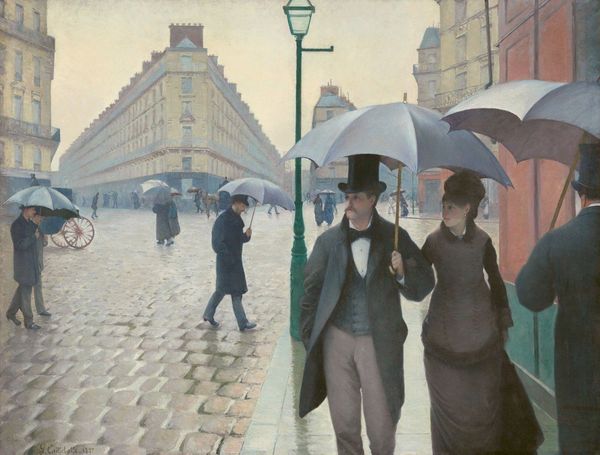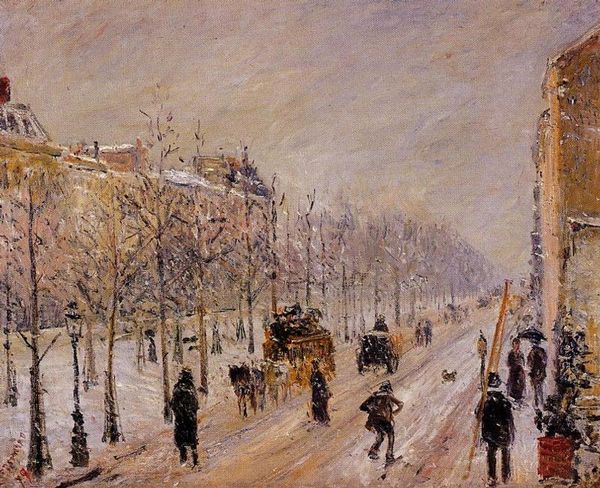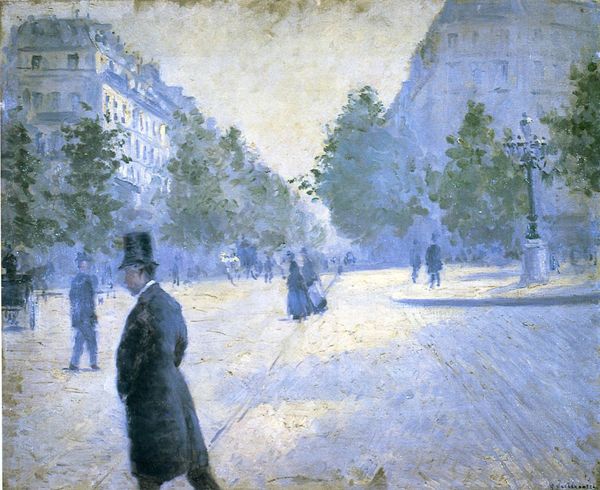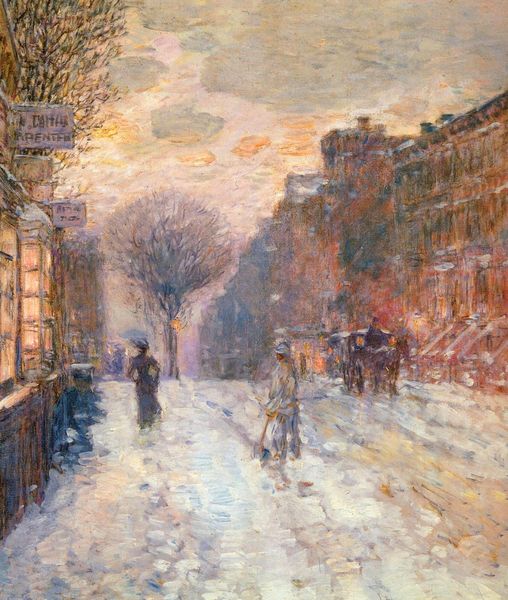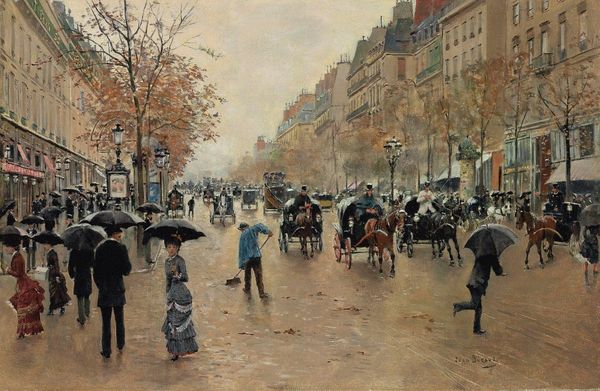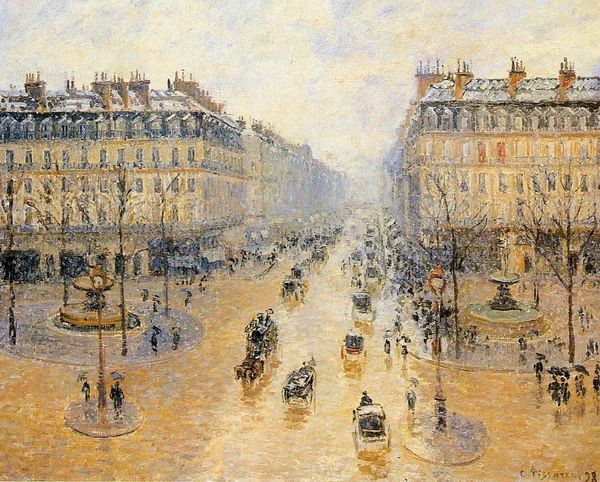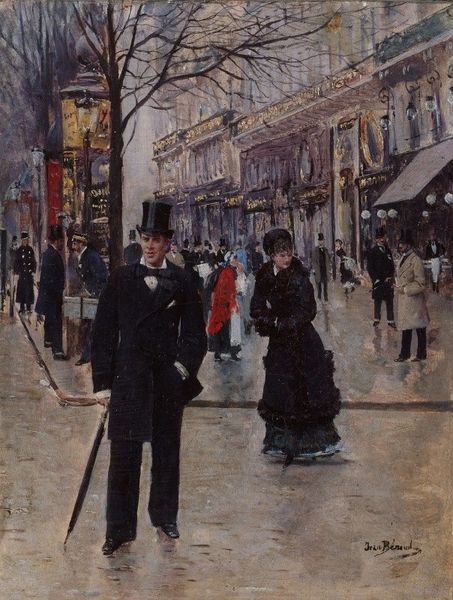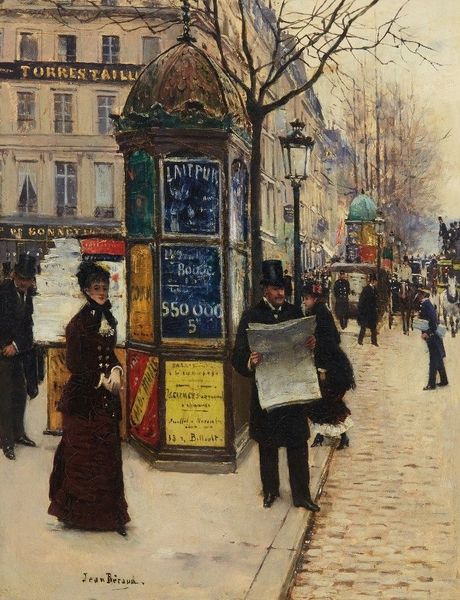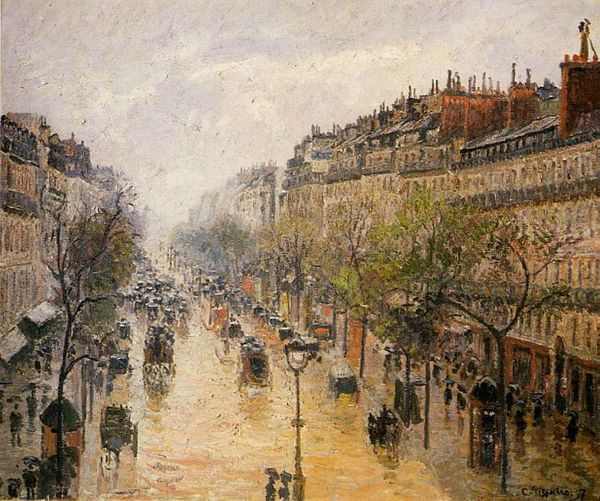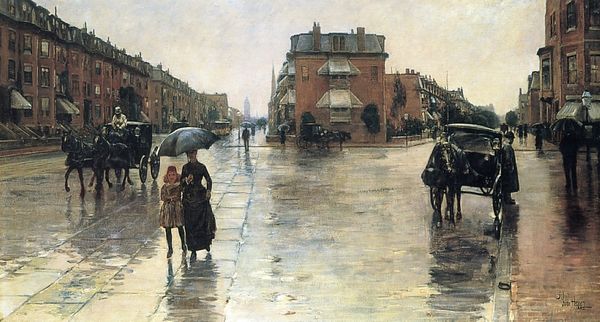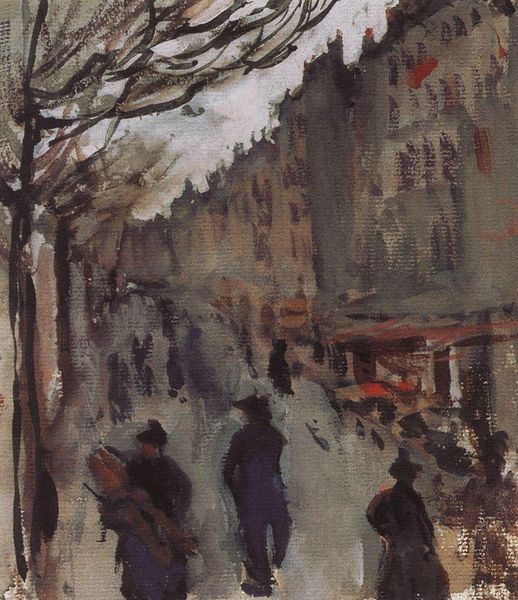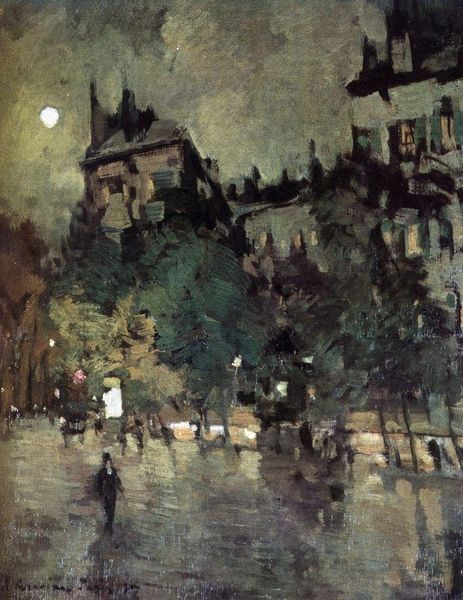
painting, oil-paint
#
flâneur
#
painting
#
impressionism
#
street view
#
oil-paint
#
painted
#
oil painting
#
cityscape
#
painting art
#
genre-painting
#
street
#
modernism
#
realism
Dimensions: 54 x 65 cm
Copyright: Public domain
Curator: Here we have Gustave Caillebotte’s "Paris, a Rainy Day," painted in 1877. It’s quite striking, isn't it? What are your first impressions? Curator: It looks meticulously constructed. The cobblestones and buildings have a solid, almost architectural feel. I’m interested in how he layered the oil paint to capture the wetness of the streets. Curator: Absolutely. This painting captures a pivotal moment in Paris's urban transformation under Haussmann. The wide boulevards were reshaping social interactions and class dynamics. Curator: These new boulevards definitely show up in the work; consider the use of iron street lamps in the mid-ground, elements manufactured on an industrial scale and installed to manage daily urban life. Curator: Exactly. And it invites reflection on the role of the flâneur, the detached observer of city life, often a privileged male, navigating these new spaces. Notice how the couple in the foreground appears well-to-do, distinctly separate from the other figures blurred in the background. What does that tell us? Curator: Well, the visible brushstrokes suggest an active making. The painting almost simulates the act of seeing, blurring background figures but keeping our couple sharp; it implicates both Caillebotte's labour and the experience of navigating a rapidly changing city. Curator: Precisely! And who has access to the time and resources to engage in that way of seeing? How might other people be shown or seen? Think about the representation of labor, or of marginalized communities, often missing from such cityscapes. Curator: You are right. I'm also drawn to his bold choices of scale and size of this work in person: Caillebotte has deployed this piece’s scale to comment on labour in the studios themselves; the monumental dimensions of the canvas allude to history paintings while focusing on contemporary subject matter and the labor of painting. Curator: The painting does such great work, then, engaging with that complicated social and historical tapestry. By examining Caillebotte's artistic choices, we can reveal these nuances of class, identity, and urban development. Curator: Ultimately, what resonates for me is how Caillebotte used the tools and processes of painting—brushstroke, layering, and scale—to really bring forward the sensation of a modernizing Paris. Curator: For me, "Paris, a Rainy Day" invites us to reflect on the complex narratives embedded within urban spaces, and who gets to participate in the experience of modernity.
Comments
No comments
Be the first to comment and join the conversation on the ultimate creative platform.
